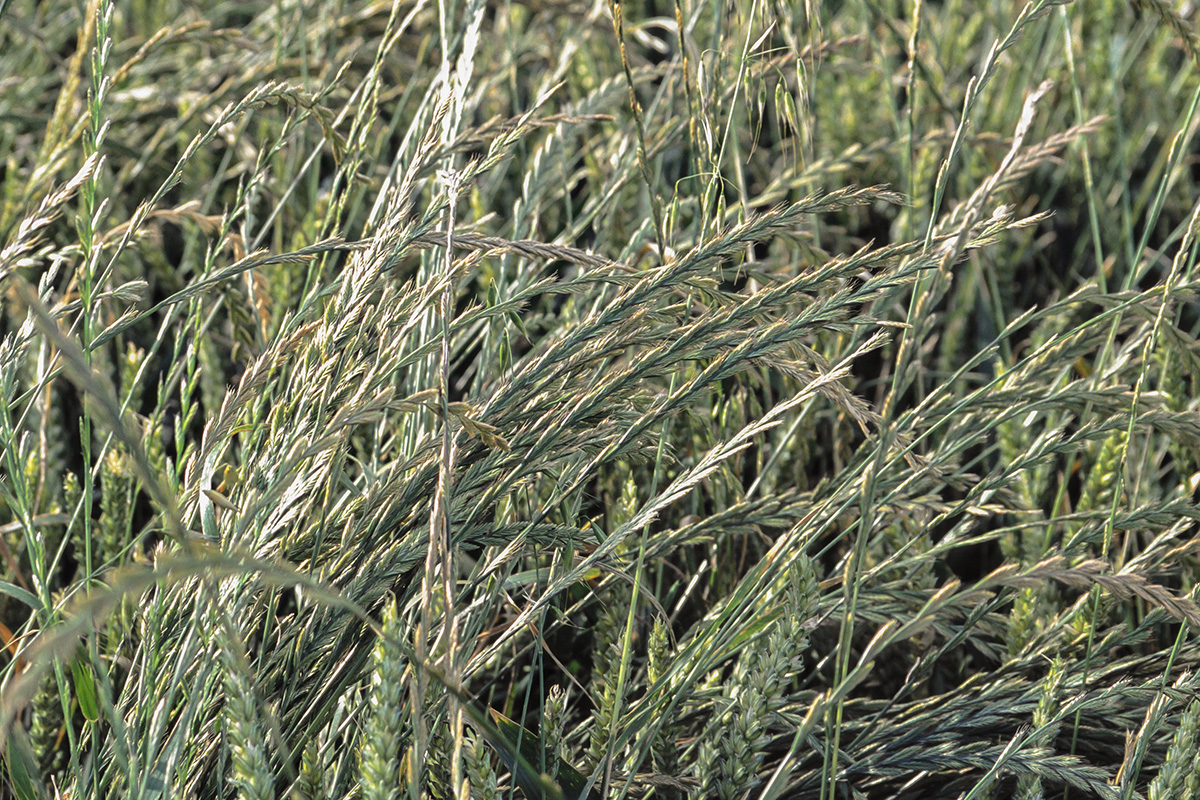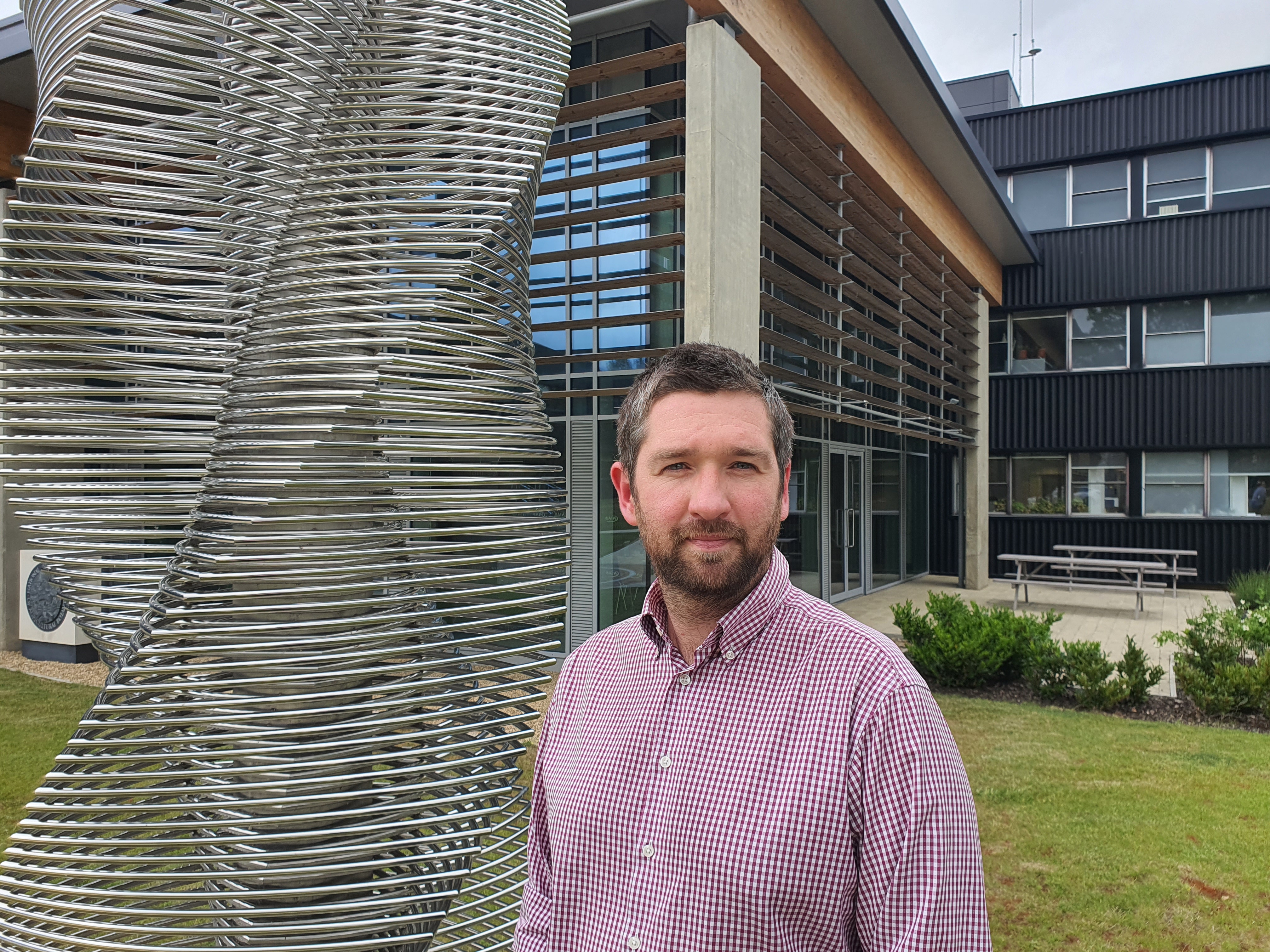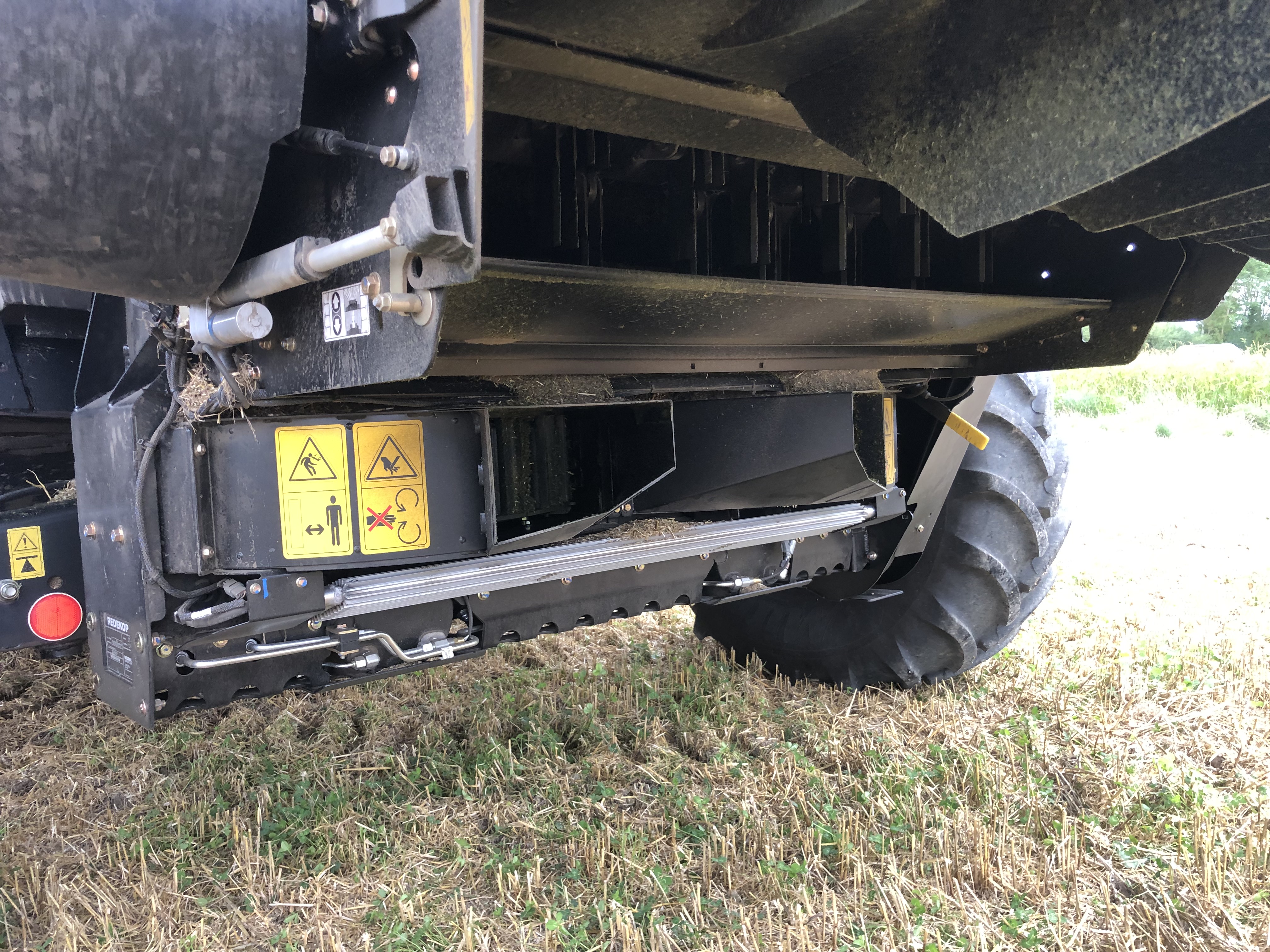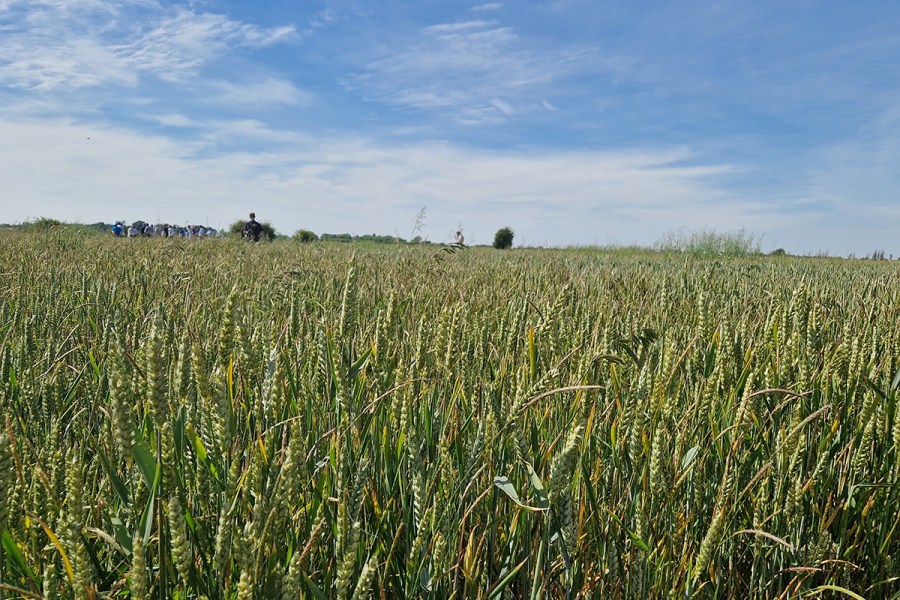
When Bayer and NIAB put out a call last summer for samples of Italian ryegrass, growers responded in unprecedented numbers. CPM attended the briefing to gather the results and implications for best practice.
Make the wrong decision and you’ll put actives under pressure, which is where problems start.
By Tom Allen-Stevens
Italian ryegrass may be set to overtake blackgrass as cereal farmers’ biggest weed worry. The UK’s largest survey of growers, and sample analysis of Italian ryegrass (IRG) to date, have revealed very variable herbicide sensitivity and that many growers are now struggling to keep the weed under control.
“IRG is becoming ever-more evident as a problem in arable crops,” says Tom Chillcott, herbicide campaign manager for Bayer who commissioned the survey. “For most growers it’s not the primary weed focus, so it’s crept in under the radar. We had an unprecedented response to a call for samples we put out last summer, and 90% of those who responded say IRG has been getting a bit or a lot worse in recent years.”
NIAB’s John Cussans carried out the survey and tested the samples received from 197 farmers across the UK. “I was bowled over by the response,” he says. Most of these were from clusters of farmers in defined areas: South West, mainly in Dorset; South East, around Essex and North Kent; Midlands, on the Welsh borders and into Shropshire and Staffordshire; North in South Yorkshire and Nottinghamshire; and “really North”, in North Yorkshire and Durham. All populations received were IRG (rather than perennial ryegrass).

John Cussans is particularly concerned about IRG sensitivity to flufenacet with survey results revealing worrying shifts.
Outside the hotspots, the survey suggests IRG is an occasional weed, but there were distinct differences in cultivation and cropping practices between the clusters, notes John. Min till and direct drilling are more common in the South East and South West, while these areas are cutting back on oilseed rape. Growers in the South West and the North are moving more into spring crops.
When it comes to herbicide usage, the vast majority of Atlantis (iodosulfuron+ mesosulfuron) is applied in the spring, according to the survey. “Axial Pro (pinoxaden) is being used more as a ‘fire brigade’ treatment. You’re unlikely to achieve good control if you apply it after April,” he adds.
“Flufenacet dominates control, used on 80% of autumn-sown crops, so it’s not surprising we’re beginning to see resistance to this creeping into IRG populations. There was also quite a large variation between clusters in herbicide sensitivity for the three we tested (see panel on pxx). Control from flufenacet was lowest in the South East, North and Midlands.
“But there were also differences between two fields on the same farm, so it matters not a jot what the national or local picture is. Resistance is evolving fast on a field-by-field scale and only by focusing on your own application timings, modes of action and through testing will you assess what threat IRG poses and how you can keep the weed under control. Make the wrong decision and you’ll put actives under pressure, which is where problems start.”
Flufenacet sensitivity is a particular concern – John explains that blackgrass and IRG differ significantly in how they respond. He illustrates this through the results of standard pot testing he’s carried out of different rates applied to a number of UK-sourced populations of the two grassweeds, some of which are known to have reduced sensitivity to the herbicide.
“In blackgrass, we can see there has been a shift in sensitivity in some populations – control dropping back from 95% to as low as 70% at a quarter dose of flufenacet, for example (see chart on pxx). You still get 100% control from the full 240g/ha rate, however. Control improves by adding more flufenacet, although bringing in more modes of action is probably better with regards long-term stewardship. But in IRG, we have populations in the UK that are effectively resistant – applying up to four times the full dose results in zero control.”
And this is why it’s a worry that growers are struggling to tackle IRG, he says. “If you have flufenacet resistance, that will drag down the control of your pre-emergence stack,” he warns.
John’s carried out further analysis of a sub-set of 22 of the IRG populations, testing them against eight pre-em and post-em herbicides. The aim was to understand any correlations between sensitivity to a wide range of herbicides.
“There is strongest correlation between existing pre-ems – flufenacet, pendimethalin and prosulfocarb. Pre-em sensitivity is correlated rather weakly to ALS herbicide resistance, however,” he reports.
“For newer actives, aclonifen is more weakly correlated to existing pre-ems, while with cinmethylin there’s correlation with pinoxaden. This doesn’t mean that there’s currently any resistance issue or an immediate risk with the cinmethylin active, but rather it helps to identify where the future problems might lie,” he stresses.
Analysis of all of the samples for cross-resistance to the main three actives tested showed similar patterns of correlation. “Significantly, a large proportion of the population that is resistant to flufenacet is sensitive to contact herbicides. So don’t assume that reduced pre-em sensitivity will result in poor control from all herbicides – that’s often the case with blackgrass, but IRG behaves differently.”
Just under 9% of the population is “in a very difficult situation” says John, resistant to all three actives tested. “It’s important to do some testing if you’re struggling to control IRG, and mixing modes of action can still be very effective.”
According to the survey, it’s most common to apply three actives to a winter wheat crop over the autumn. John took seven of the most resistant samples, planted them in containers, and applied straight flufenacet, Liberator (flufenacet+ diflufenican) or Liberator plus Proclus (aclonifen) to them at pre-emergence. While the average reduction in fresh weight from flufenacet was around 40%, Liberator averaged around 60% control, with the addition of Proclus pushing this up to 96% (see chart on pxx).
“Combining the three pre-em actives largely but not completely ‘overcomes’ flufenacet resistance. Most growers are already using a standard base of three actives, so it’s time to broaden that out to five,” he concludes.
Good stewardship vital as glyphosate sensitivity shifts
Growers adopting regenerative agriculture systems are most at risk of bringing glyphosate resistance into their fields, warns John Cussans. While there are still no known cases of weeds resistant to the herbicide in the UK, there has been a shift in sensitivity, and in Italian ryegrass (IRG) in particular.

As grassweed plants get larger, make sure you adjust dose accordingly, advises Roger Bradbury.
Worldwide, almost 50 cases of resistance in ryegrass have been identified, mostly found in IRG (Lolium multiflorum). It’s also been found in annual ryegrass (L. rigidum), particularly in perennial cropping situations in Australia, although this is a species rarely found in the UK, notes John.
“Repeated applications to the same place bring about the highest risk of resistance – treating fence lines is a common area for this to develop. What you want to avoid is treating survivors of a glyphosate application, or allowing these to go on to seed,” he advises.
“We’ve taken survivors from a UK field into a lab and managed to create an IRG population with a ten-fold reduced sensitivity to glyphosate through repeated poor practice. That should act as a wake-up call.”
Samples taken in 2019 of 50 ‘difficult populations’ of IRG have been tested with four different rates of 360g/l glyphosate – 0.25-4.0 l/ha. At 1.5 l/ha, control dropped from 92% for the susceptible control to 73% on average across the 50 samples. The same population showed a significantly reduced sensitivity to Atlantis of 76%, Axial 66% and flufenacet 14%. “But glyphosate sensitivity is totally independent of in-crop herbicide susceptibility,” stresses John.
Looking across other studies, these suggest IRG is the grassweed most at risk of glyphosate insensitivity, with the worst UK population found to be 4.7x less susceptible than the standard. The equivalent for blackgrass is 1.7x and for sterile brome 3.5x. “Rat’s tail fescue is also one we’re keeping a close eye on, following reports of a case of resistance in perennial cropping in Germany. So while there are no known cases of grassweed resistance in the UK, we’re as close today as we’ve ever been,” he warns.
Allowing high populations to develop in the field and leaving them for a long period before treating are among practices that will encourage reduced sensitivity. Repeat applications to surviving plants should also be avoided, with non-chemical options, such as cultivation, advised. Applying at the right dose rate and timing and in the right conditions maximises efficacy.
“Good stewardship is particularly important for regenerative agriculture growers, especially those who direct drill and use reduced rates. Part of that journey must be a heightened level of monitoring and care not to select populations for reduced sensitivity,” he emphasises.
Bayer’s Roger Bradbury notes that 540g/ha of glyphosate should be considered the minimum dose, suitable for small seedlings up to 2-3 leaves, stepped up to 720g/ha up to tillering. “As plants get larger with more tillers it might be appropriate to move that dose higher closer to 900–1080g/ha. Then from GS30 to ear emergence, glyphosate uptake is poor, and its use should be avoided. Once you get to flowering, it’s effective again but 1080g/ha is the minimum dose you should consider.”
This should be applied at a water volume in the range 80-250 l/ha, with 100 l/ha usually best. “When added to hard water, the chelates in glyphosate bind with the cations to become locked up which makes them unavailable. So you should add a chelating agent to the spray tank first, or use a product such as Roundup that has been formulated to avoid these issues,” he adds.
Proclus approved for use in barley
Winter barley growers have a new mode of action to control weeds with the approval of Proclus (aclonifen) in a tank-mix with Liberator (flufenacet+ diflufenican) for pre-em weed control.

Proclus lifts control of blackgrass in winter barley by around 5-6% and of IRG by around 7%, says Tom Chillcott.
Used since 2020 in winter wheat to step up control of blackgrass and ryegrass, Tom Chillcott notes winter barley can be a challenging crop for weeds. “The crop is drilled earlier than wheat and there are fewer herbicides available, so growers are far more reliant on crop competition to manage weeds. Including aclonifen in the pre-em mix will give barley crops a little more protection to grow away.”
Proclus lifts control of blackgrass by around 5-6% and of IRG by around 7%, he says, as well as offering a wider broadleaf weed spectrum compared with straight Liberator. It also performs well in drier environmental conditions which are likely to be a factor in early autumn when barley is drilled.
The application rate for barley is 1.0 l/ha with 0.6 l/ha Liberator, as opposed to 1.4 l/ha for wheat, to reduce the risk of phytotoxicity. Aclonifen sits on the soil surface and takes effect as weeds grow through it, so seedbed preparation, drilling depth and application timing all contribute to getting maximum efficacy, notes Tom.
“Drill barley to a consistent depth of 32mm then apply Proclus with Liberator within 48 hours of drilling to get the best results. Make sure no very heavy rain is forecast in the day or two after application to ensure efficacy and safety,” he adds.
Proclus will be available as a co-pack with Liberator, adding a small premium to the cost of the pre-em stack in barley.
Farmers focus on weed seed destruction
Could controlling weed seeds at harvest provide another route to keep IRG at bay? NIAB’s Will Smith presented some options at Groundswell, and a new, farmer-led study taking place into the technique this harvest.

A Redekop SCU, fitted here to a Case IH 7230 combine, achieved an 83% reduction in meadow brome seedlings in the following crop in a 2021 trial.
“Harvest weed seed control (HWSC) could be particularly valuable for regenerative agriculture growers,” notes Will. “With no losses associated with cultivation, the need to minimise seed return is far more acute in no-till systems.”
He highlights the Redekop seed control unit (SCU), that attaches to the back of the combine and mills the chaff, claimed to render unviable 98% of the seed that passes through it. “The difficulty at present is that there’s very little data from the UK on how much viable weed seed is still standing at harvest.”
No UK data exists on IRG, while a couple of studies suggest between 10-37% of blackgrass could be milled – this rises to as much as 60% in spring wheat, adds Will. “A study we undertook last harvest using the SCU on meadow brome found this achieved an 83% reduction in seedlings in the following crop.”
Gathering good quality data will be the main aim of the new study taking place this summer. The SCU will be tested on three UK farms, where IRG, meadow brome and blackgrass are the main targets. Coordinated by the British On-Farm Innovation Network (BOFIN), around 70 farmers and scientists have joined a ‘knowledge cluster’ to help shape the project and contribute data and information that Will’s hoping will give growers a better idea of how useful HWSC may be.
“While it could be a very valuable solution for organic and regenerative growers, the data we’re capturing and the on-farm practice the farmers involved will be co-designing will become critically important if glyphosate loses its approval,” he notes.
This article was taken from the latest issue of CPM. For more articles like this, subscribe here.




